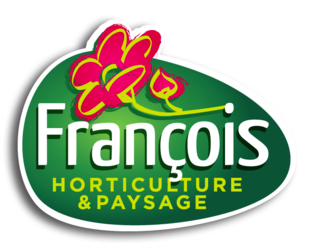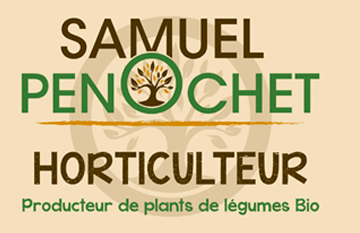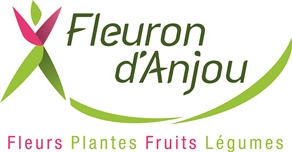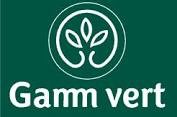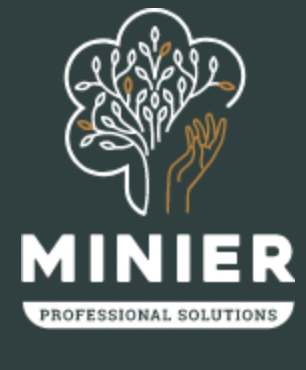Synthèse
The global horticultural market, particularly for flowers and ornamental plants, was valued at $50.28 billion in 2021 and is projected to grow at a CAGR of 6.3% to reach $92.62 billion by 2031. In Europe, the horticultural market experienced fluctuations, with a period of stagnation in 2020, followed by a 7.7% growth in 2021. The Netherlands leads European production with 31% of the value in 2021, while France ranked fifth with 10%. The French horticultural sector saw sales hit €1.801 billion in 2021, yet there has been a significant decline in the number of growers, nearly halving from 2013 to 2022. The landscape sector, a major customer for horticulturists, boasted sales of €7.7 billion in 2022, buoyed by the surge in demand for green spaces post-Covid-19.
Consumer prices for horticultural products rose by 16.59% from 2019 to 2023. The French horticultural market reveals a preference for local and regional sales, with private individuals accounting for 60.2% of customers when direct sales are included. In 2022, 73% of French households purchased at least one plant, and despite the impact of Covid-19, which led to a job loss of 3,600 in the industry and a 17% sales decline from March-June 2020, there is an upturn in consumer appeal.
However, the landscaping and consumer segment still face challenges with the increasing competition from imports, with France's imports totalling €1,142 million compared to exports of just €95 million in 2022.
Horticultural Demand in Flux: A Blended Landscape of Growth and Decline
The horticultural market in the country presents an interesting tapestry of consumer behavior and market dynamics. A central theme that emerges from the analysis is the oscillation between growth and decline. Despite the market witnessing a general upward trajectory of 14% in 2021, reaching around 1.8 billion euros, it faced setbacks due to the dwindling number of horticulturalists which declined by more than 50% from 2013 to 2022. The employment in the sector also echoed this reduction, shrinking by approximately 31% within the same period. From a consumer perspective, more than half of the households have shown interest in buying at least one outdoor plant. Yet, there has been a noted decrease in the average budget and quantity of plants purchased by households which somewhat contradicted the high consumer interest.
Interestingly, the over 65 demographic emerged as a significant contributor to the sector's revenue, with their spending constituting nearly 44% of the total expenditure on horticulture, which outpaced their representation in the population. Seasonality plays a pivotal role in horticultural purchasing, with consumer activity picking up during spring, marked by April and May, and then again in October, often associated with cultural traditions like All Saints' Day. This implies that market demand follows the rhythm of the seasons and related cultural events rather than exhibiting a steady, year-round pattern.
Local authorities and businesses, despite understanding the burgeoning demand for greenery in urban spaces, have yet to channel their budgets substantially towards the creation or maintenance of such spaces. This suggests that while there is an acknowledgment of the importance of horticulture in enhancing urban life, it has not yet fully translated into consistent financial investment.
The market also reflects the broader ecological trends with younger plants witnessing the most significant growth, accounting for about 36% of the sales in 2021, which underscores a gradual shift in consumer preferences. The inclination towards eco-friendly and locally-sourced products has become increasingly prevalent, with a considerable chunk of garden centers and grain stores relying on French origin plants — around 65% of their supplies.
In terms of distribution, the market continues to thrive on local and regional sales with a promising digital transformation on the horizon. The advent of the Covid-19 crisis served as a catalyst for a shift towards e-commerce, though it is still nascent in its reach compared to physical sales channels. In conclusion, the horticultural.
Landscape of the Horticultural Market: Key Players and Cooperatives
The horticultural market, home to a myriad of species and products, is supported and enriched by a host of key players, each contributing to the vibrancy and diversity of the industry. Dominating the stage in different segments of the market are both individual enterprises and cooperative structures that have adapted to the changing demands and challenges of the horticultural trade.
- Leading the way in France is Val'Hor, serving as the French Interprofession for horticulture, floristry, and landscaping, which orchestrates the activities of various market players, setting a framework for collaboration and development across the sector. Recognized by the French government, Val'Hor's role is crucial for advocacy, market analysis, and the promotion of standards across the industry.
- François Horticulture, hailing from Saint-Alban-De-Montbel, is a prominent name within the Auvergne-Rhône-Alpes region, distinguished by its regional contributions to the production of various ornamental plants and flowers.
- Similarly, SARL Renou Horticulture, based in Le Lude in Pays de la Loire, has made its mark with its regional horticultural offerings.
- Cooperatives play a significant role in ensuring smaller producers can gain access to larger distribution networks, with groups such as Le Fleuron d'Anjou showcasing the power of collective action. By pooling resources, these cooperatives enable horticulturalists to amplify their reach and market penetration, further invigorating the sector's economic activity.
- The distribution channel sees InVivo Retail reigning supreme in the garden center domain with well-known franchises like Jardiland and Gamm Vert under its banner. This retail giant not only ensures a wide availability of horticultural products for consumers but also sets trends and standards within the garden retail sector.
- In the realm of wholesale, traditional platforms remain in play, with numerous wholesalers operating across the country. Among these are established wholesale markets such as Rungis and those in cities like Lille and Toulouse, which continue to be critical hubs for the distribution of plants and related products.
- While some market players remain anchored in traditional brick-and-mortar establishments, e-commerce emerges as a new frontier, with certain specialists like OOGarden persevering through the digital transition. Despite the challenges of adapting logistics to the unique demands of horticultural products, the push towards online sales channels signifies a significant shift in market dynamics.
à la compréhension de ce marché
Détail du contenu
 Informations
Informations
- Nombre de pages : 30 pages
- Format : Version digitale et PDF
- Dernière mise à jour : 11/12/2023
 Sommaire et extraits
Sommaire et extraits
1 Market overview
1.1 Definition and scope of study
Horticulture is the art of maintaining gardens and green spaces. According to the Interprofession de l'Horticulture, de la Fleuristerie et du Paysage, horticulture refers to the production of ornamental plants: cut flowers and foliage, indoor and outdoor potted plants, bedding plants (annuals and biennials), perennials, aquatic plants, trees (including Christmas trees), shrubs and flower bulbs used for ornamental purposes.
Seeds, vegetable seedlings, forestry seedlings for reforestation, fruit seedlings for arboricultural and fruit production, vine seedlings for wine production, aromatic, medicinal and perfume plants not intended for ornamental production are excluded. However, certain fruit plants and vegetable plants are included in the horticultural sector because they are also produced by horticulturists.
There are two distinct modes of horticultural production: indoor and outdoor.
The world market for flowers and ornamental plants was valued at 50.28 billion in 2021 and should continue to grow at a CAGR of 6.3% between 2021 and 2031, reaching 92.62 billion.It ismainly developed in Western countriesand dominated by the United States. [Business Research Insights]
The European market is also booming, and dominated by the Netherlands (31% of European production value). France ranks 5th with 10% of production value. [FranceAgriMer]
France's horticultural sector comprises over 50,000 companies involved in production, distribution andlandscaping, reflecting a highly fragmented market. Horticulturists are the main players in the value chain, accounting for around 6% of companies in the sector[FranceAgriMer]. There is then a wide variety of distribution channels, from direct sales to wholesalers and retailers (such as garden centers and florists).
Purely horticultural sales in France (excluding sales of other agricultural products, garden center articles, etc.) are in constant decline over a 10-year period (-31%), before rising slightly between 2019 and 2021 (+14%) . This decline is the result of increased competition from imports and a reduction in the number of players in the sector. This brings it to 1,617 million excluding VAT in 2021 [FranceAgriMer]
In 2022, 73% of households bought at least one plant [Kantar pour Valhor] . Thishigh consumption of ornamental plants and vegetation by the French is one of the reasons for thecountry's largely negative trade balance, and therefore for increased competition from imports. In fact,its imports will amount to1,142 million in 2022, while its exports will total just 95 million euros. [FranceAgriMer]
The rate of purchasing households is fairly stable compared to previous years, but still below the pre-crisis level (76%)[Kantar pour Valhor]. Covid-19 has had a real impact on this sector, especially sincethe closure of shops during this spring and calendar holiday period represented a loss of 3,600 jobs for the horticultural sector [Ouest-France], and a 17% drop in growers' sales over the March-June 2020 period [Strategy&].
Horticulture should, however, benefit from the new consumer appeal triggered by containment. We should also continue to see the number of production companies shrink and e-commerce develop. As the "pleasure" segment par excellence, horticulture will naturally benefit from the boom in second homes and demographic change.
1.2 The global horticultural market
The global horticultural market can be linked to the market for flowers and ornamental plants. This was valued at $**.** billion in ****, and is expected to grow by *.*% between **** and ****, reaching $**.** billion.
World market for flowers and ornamental plants World, ****-****, in billions of US dollars Source: ****
The horticultural market is mainly ...
1.3 Horticultural market stabilizes after long years of decline
Between **** and ****, total sales for horticultural and nursery companies rose by **%. They will reach *.*** billion euros in **** .
However, by ****, the French horticultural sector will be hard hit by a decline in the number of growers, and its competitiveness will deteriorate. In ** years, due to strong competition, the number of French companies ...
1.4 Foreign trade in horticultural products
And in horticultural products
The high consumption of ornamental plants by the French is at the root of a largely negative trade balance for the country , with imports of *,*** million euros in **** and exports of just ** million euros. Thus, the trade balance has always been negative between **** and ****, rising from -***.* ...
1.5 Covid-19 has had a major impact on the horticultural sector
The industry was heavily impacted by Covid-** due to store closures. Florists were closed for the duration of the containment period, and garden centers were only allowed to sell animal products until April *. After April *, the sale of vegetable seedlings was permitted as a basic necessity. Finally, from April *, garden centers ...
2 Demand analysis
2.1 The dynamism of landscapers, intermediate customers of horticulturists
There are three main types of customer for horticulturalists: landscapers (***), companies and local authorities, and private individuals .
In this section, we'll look at how demand from landscapers influences the market for horticulturalists.
The first thing to note is that the landscaping sector has been growing steadily since ****, and is therefore a ...
2.2 Local authorities and businesses find it difficult to direct their budgets towards the creation of green spaces
Local authorities and businesses can work directly with horticulturalists to purchase flowers and plants, particularly for occasional green-space maintenance needs that require less expertise than their creation.
According to the Palmarès des villes vertes ****, the number of m* of green spaces per inhabitant rose from ** m* to ** m* between **** and ...
2.3 The French buy more plants, but on a smaller budget
Trend in French spending on horticultural products
In ****, **% of households purchased at least one outdoor plant (***), down on recent years due to a decline in average quantities purchased and average budget per purchasing household.
Average basket of outdoor plants in volume and value per purchasing household France, ****-****, in units, in ...
2.4 Cyclical demand, largely dependent on the weather
The purchase of plants is highly seasonal, with a notable increase in purchases in April and May (***).
The summer months are less propitious for plant consumption, as households often leave their homes to go on vacation.
Purchasing calendar France, ****, in % of amounts spent Source: ****
2.5 Containment has led to renewed interest in horticulture
Covid-** had different impacts on each segment of demand for horticultural products.
For landscape gardeners, for example, who were unable to carry on their trade continuously during the containment period, the coronavirus led to a drop in sales, and therefore a fall in demand for plants. The gross sales index fell ...
3 Market structure
3.1 Horticultural value chain
Horticulturalists are at the start of the value chain, as they produce the finished plants they grow (***). Horticulturalists can either propagate the plants themselves or source them from specialized companies.
They then have multiple distribution channels at their disposal, with sales to wholesalers and direct sales to retailers, landscapers, local authorities ...
3.2 Fewer and fewer horticulturists
The number of horticultural companies has been falling steadily since ****(***).
Growth in the number of companies and employees in horticultural production France, ****-****, in units Source: ****
South of France
(***
(***
(***
**
(-**%
(+**% between **** and ****
Surface area cultivated by horticulturists France, ****-****, in thousands of hectares Source: ****
In ...
3.3 Distribution of horticultural products
There is a diversity of distribution channels in the sector. In ****, a large proportion of sales by horticultural producers will be made directly to private individuals(***).
If we take into account all the channels aimed directly at private individuals (***), we find that private individuals account for **.*% of horticultural product customers.
Breakdown ...
3.4 Mostly local distribution
French growers mainly sell locally and regionally. In fact, according to FranceAgriMer, horticultural sales are made in the following order:
Regional (***) ; locally (***) ; nationally (***); eU-wide; worldwide.
Furthermore, in ****, plants of French origin will account for **% of plant supplies in garden centers and grain stores. In addition, **% of these establishments offer products with ...
3.5 E-business opportunities for horticulture
Although the horticultural market is lagging behind in terms of digitalization, it is likely to turn increasingly to this mode of marketing, particularly in light of the lessons learned from the Covid-** crisis.
Today, the vast majority of garden center and horticultural chains are not involved in online sales, with the ...
4 Offer analysis
4.1 Different horticultural products
Sales of horticultural products are varied, with the following main categories:
Nursery plants : woody plants such as trees and shrubs. Potted plants. Bedding plants : plants used to make up flower beds (***). Cut flowers : flowers sold in bouquets or used to make garlands or other decorations. Perennials and aromatics: a perennial is ...
4.2 Consumer prices for horticultural products
Since ****, prices for garden, plant and flower products have been rising steadily(***).
This may in part explain why the average budget per purchasing household has seen full growth between **** and ****, as seen in part *.*.
consumer price trends for garden, plant and flower products France, ****-****, index base *** **** Source: ****
5 Regulations
5.1 Regulatory framework
Interprofessional agreement
VAL'HOR has been recognized by the French government since August **, **** as the French Interprofession for horticulture, floristry and landscaping. Recognition of Interprofessions is provided for by the French Rural Code - Article L***-*.
An interprofessional financing agreement had been concluded by Val'Hor members on March **, **** for a period ...
6 Positioning the players
6.1 Segmentation
- François Horticulture
- Samuel Penochet
- Le Fleuron d'Anjou
- Gamm Vert (Teract Groupe)
- Jardiland (Groupe Teract)
- Truffaut
- Pépinières Naudet
- Pépinières Ripaud
- Pépinières Lepage
- Pépinières Minier
- Pépinières Jean Huchet
- Pépinières Rouxel
- Pépinières Guillaume
- Pépinières Larnaud
- Pépinières de Kerzarc'h
- Pépinières de la Saulaie
- Pépinières et Roseraies Georges Delbard
- Pépinières du Val d'Erdre
- Pépinières du Val de Loire
- Pépinières Delabroye
- Pépinières Charentaises
- Cholat Pépinière
 Liste des graphiques
Liste des graphiques
- Marché mondial des fleurs et plantes ornementales
- Production européenne de plantes et fleurs
- Répartition de la valeur de la production en 2021
- Chiffre d'affaires total des entreprises horticoles et pépinières
- Chiffre d'affaires "horticole"
Toutes nos études sont disponible en ligne et en PDF
Nous vous proposons de consulter un exemple de notre travail d'étude sur un autre marché !
Dernières actualités
Entreprises citées dans cette étude
Cette étude contient un panorama complet des entreprises du marché avec les derniers chiffres et actualités de chaque entreprise :
 Choisir cette étude c'est :
Choisir cette étude c'est :
Accéder à plus de 35 heures de travail
Nos études sont le résultat de plus de 35 heures de recherches et d'analyses. Utiliser nos études vous permet de consacrer plus de temps et de valeur ajoutée à vos projets.
Profiter de 6 années d'expérience et de plus de 1500 études sectorielles déjà produites
Notre expertise nous permet de produire des études complètes dans tous les secteurs, y compris des marchés de niche ou naissants.
Notre savoir-faire et notre méthodologie nous permet de produire des études avec un rapport qualité-prix unique
Accéder à plusieurs milliers d'articles et données payantes
Businesscoot a accès à l'ensemble de la presse économique payante ainsi qu'à des bases de données exclusives pour réaliser ses études de marché (+ 30 000 articles et sources privées).
Afin d'enrichir nos études, nos analystes utilisent également des indicateurs web (semrush, trends…) pour identifier les tendances sur un marché et les stratégies des entreprises. (Consulter nos sources payantes)
Un accompagnement garanti après votre achat
Une équipe dédiée au service après-vente, pour vous garantir un niveau de satisfaction élevé. (+33) 9 70 46 55 00
Un format digital pensé pour nos utilisateurs
Vous accédez à un PDF mais aussi à une version digitale pensée pour nos clients. Cette version vous permet d’accéder aux sources, aux données au format Excel et aux graphiques. Le contenu de l'étude peut ainsi être facilement récupéré et adapté pour vos supports.
 Nos offres :
Nos offres :
the horticultural market | France
- Quels sont les chiffres sur la taille et la croissance du marché ?
- Quels leviers tirent la croissance du marché et leur évolution ?
- Quel est le positionnement des entreprises sur la chaine de valeur ?
- Comment se différencient les entreprises du marché ?
- Données issues de plusieurs dizaines de bases de données
Pack 5 études (-15%) France
- 5 études au prix de 75,6€HT par étude à choisir parmi nos 800 titres sur le catalogue France pendant 12 mois
- Conservez -15% sur les études supplémentaires achetées
- Choisissez le remboursement des crédits non consommés au terme des 12 mois (durée du pack)
Consultez les conditions du pack et de remboursement des crédits non consommés.
- 20/09/2023 - Ajout des informations de l'entreprise Cholat Pépinière
- 04/07/2023 - Ajout des informations de l'entreprise Pépinières Charentaises
- 04/07/2023 - Ajout des informations de l'entreprise Pépinières Delabroye
- 04/07/2023 - Ajout des informations de l'entreprise Pépinières du Val de Loire
- 04/07/2023 - Ajout des informations de l'entreprise Pépinières du Val d'Erdre
- 04/07/2023 - Ajout des informations de l'entreprise Pépinières et Roseraies Georges Delbard
- 04/07/2023 - Ajout des informations de l'entreprise Pépinières de la Saulaie
- 04/07/2023 - Ajout des informations de l'entreprise Pépinières de Kerzarc'h
- 04/07/2023 - Ajout des informations de l'entreprise Pépinières Larnaud
- 04/07/2023 - Ajout des informations de l'entreprise Pépinières Guillaume
- 04/07/2023 - Ajout des informations de l'entreprise Pépinières Rouxel
- 04/07/2023 - Ajout des informations de l'entreprise Pépinières Jean Huchet
- 04/07/2023 - Ajout des informations de l'entreprise Pépinières Minier
- 04/07/2023 - Ajout des informations de l'entreprise Pépinières Lepage
- 04/07/2023 - Ajout des informations de l'entreprise Pépinières Ripaud
- 04/07/2023 - Ajout des informations de l'entreprise Pépinières Naudet
- 04/07/2023 - Ajout des informations de l'entreprise Promesse de Fleurs
- 21/02/2023 - Mise à jour des données financières de l'entreprise Truffaut
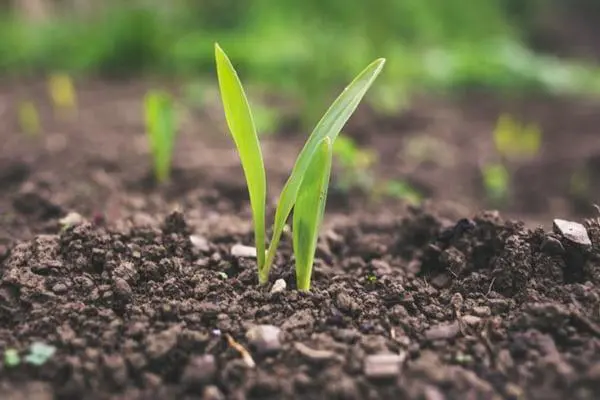




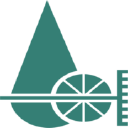 Les pépinières Cholat investissent dans un centre de R&D pour leurs arbres | fruitiersPépinières Cholat investissent en R&D - 19/09/2023
Les pépinières Cholat investissent dans un centre de R&D pour leurs arbres | fruitiersPépinières Cholat investissent en R&D - 19/09/2023
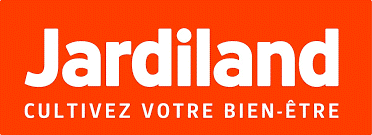 Jardiland: services clés en main pour l'entretien du jardin - 13/10/2022
Jardiland: services clés en main pour l'entretien du jardin - 13/10/2022
